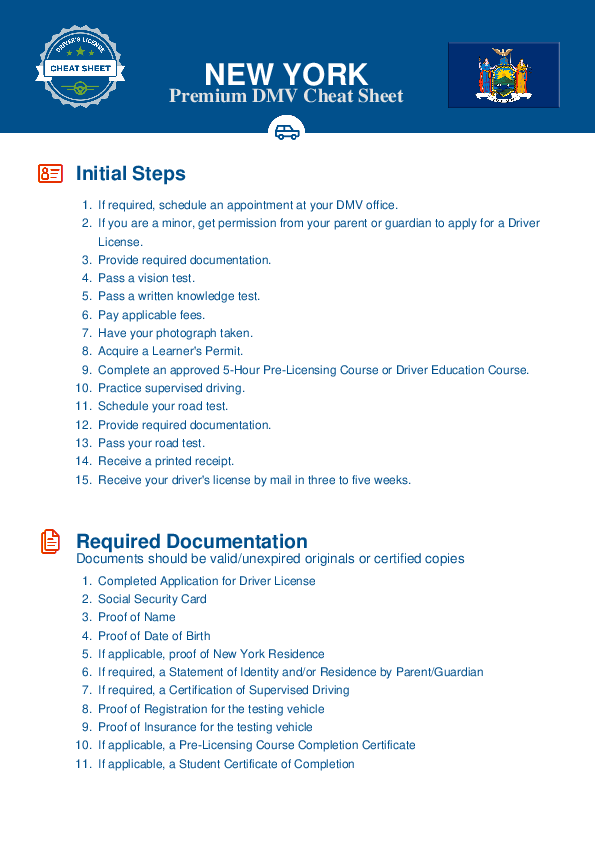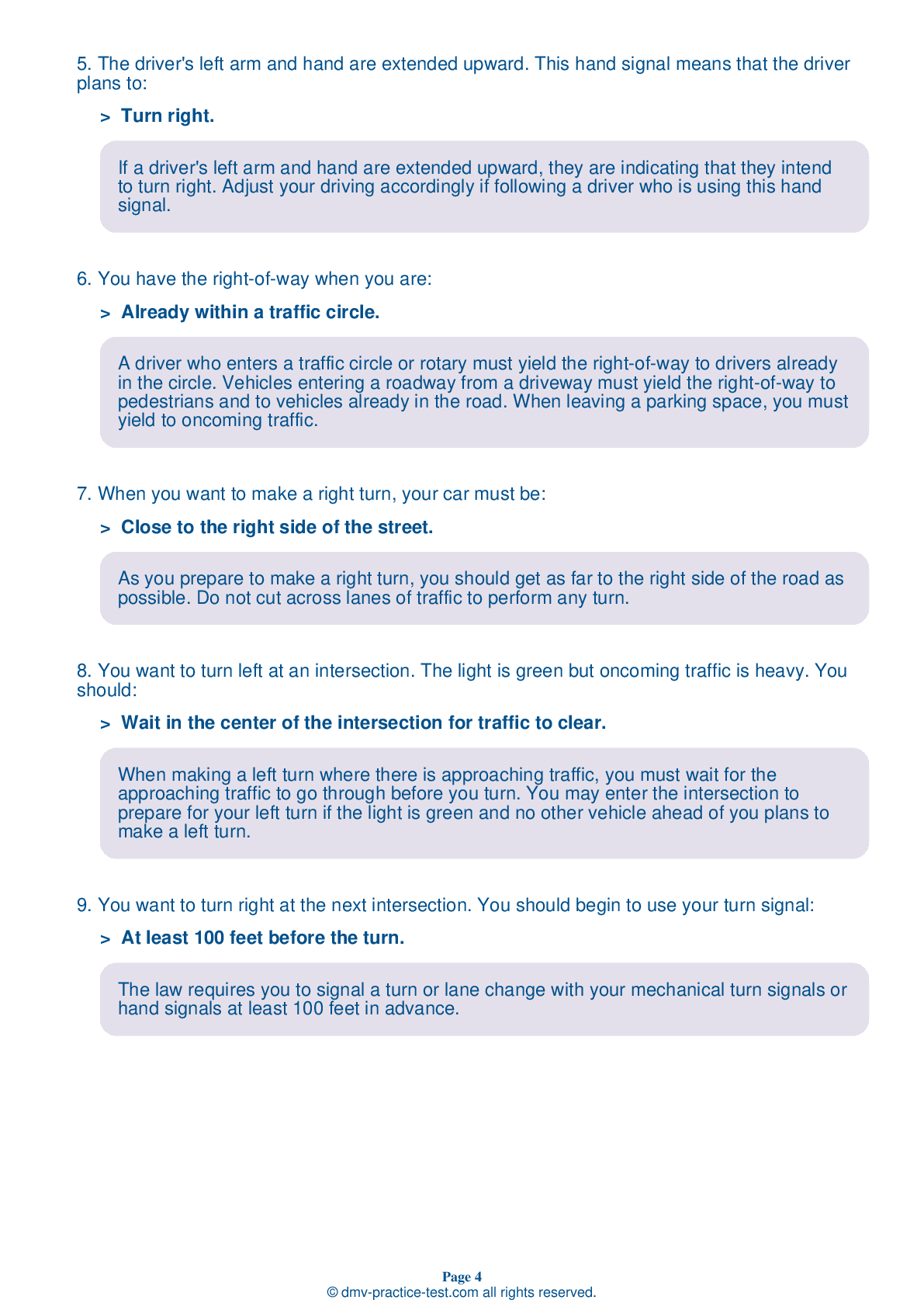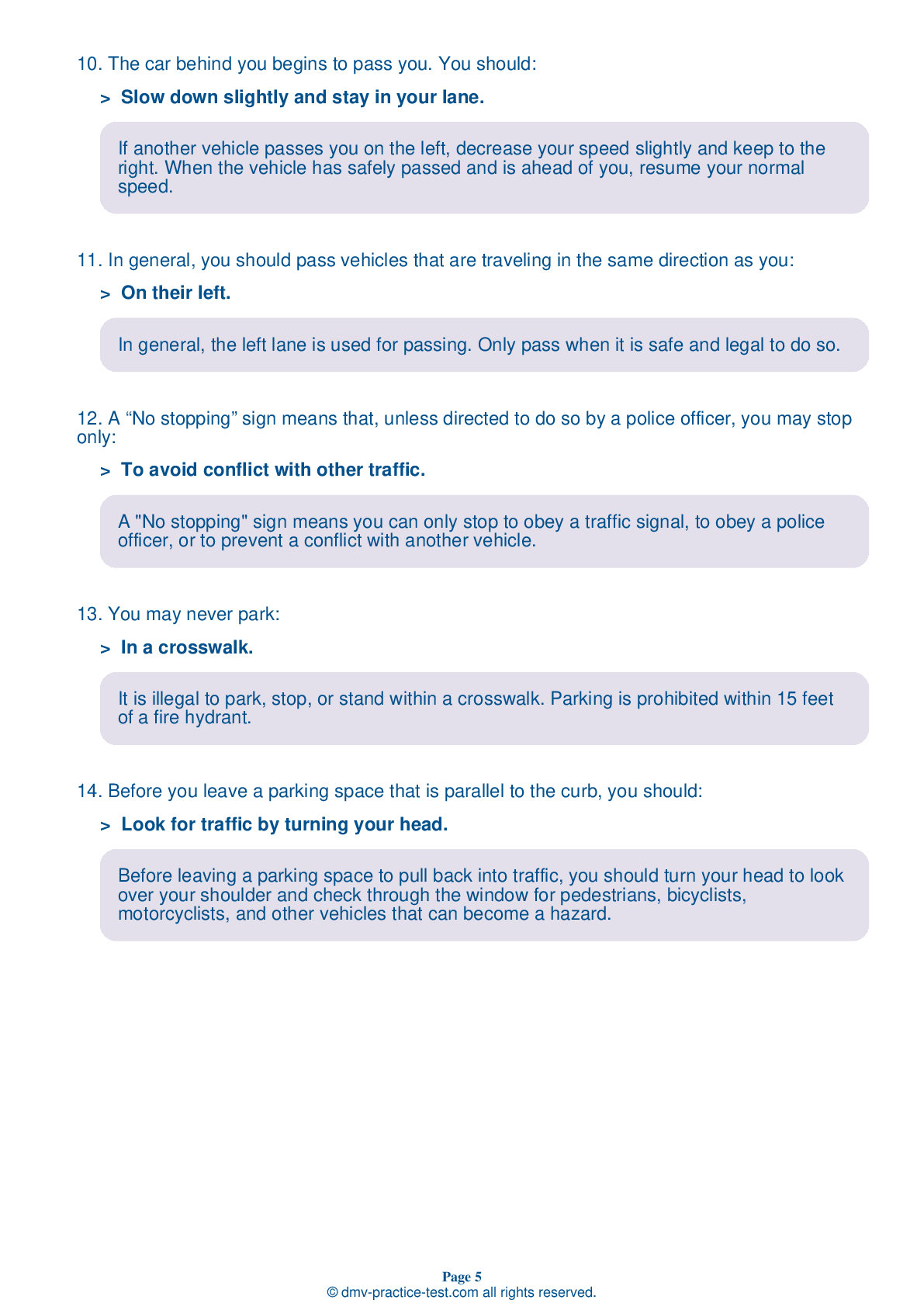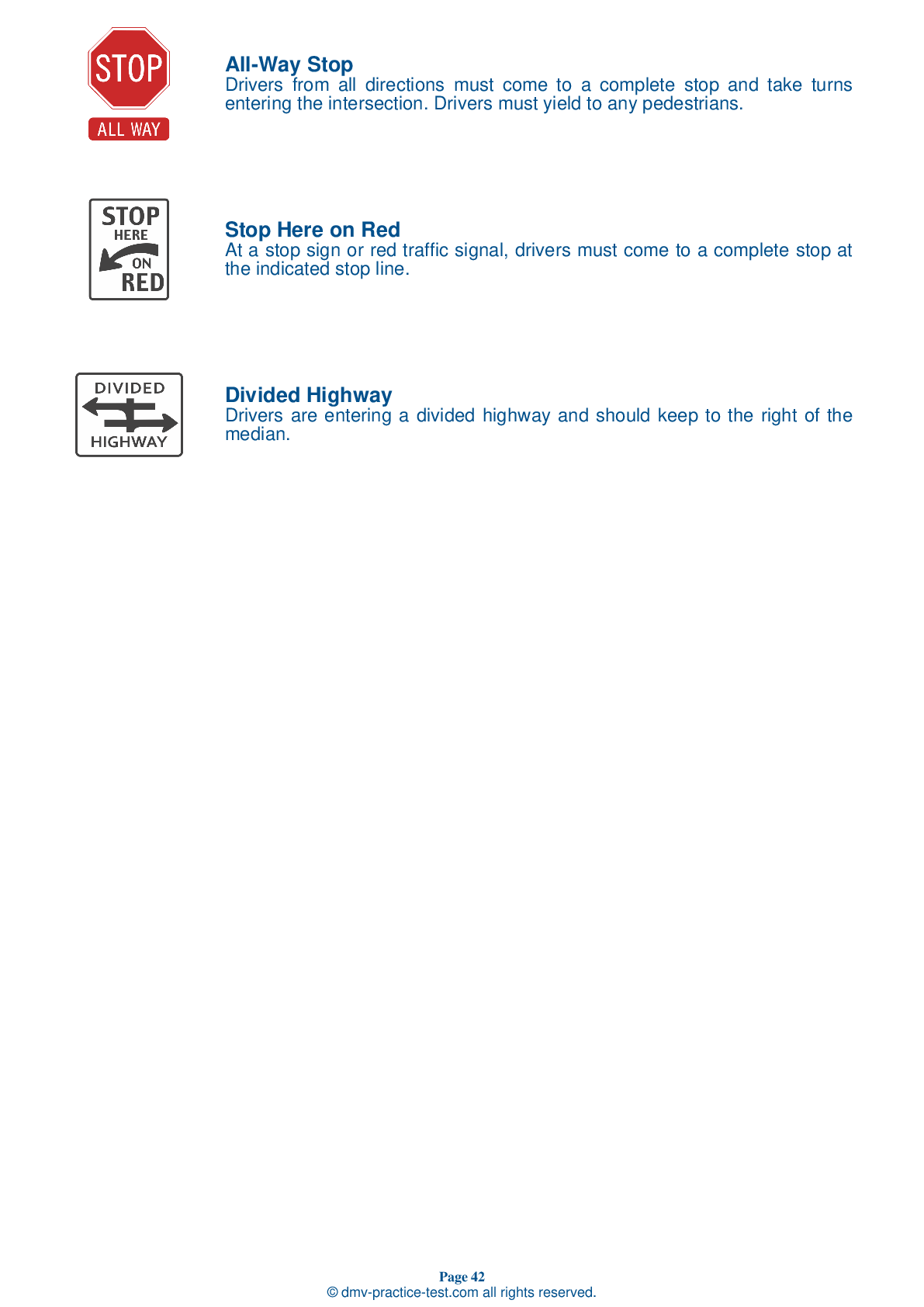FREE New York DMV Practice Test #17
New York's DMV practise examinations have been revised for January 2025. It includes questions based on the New York Driver Handbook's most significant traffic signals and legislation for 2025. Use actual questions that are very similar (often identical!) to the DMV driving permit test and driver's licence exam to study for the DMV driving permit test and driver's licence exam.
On the practise exam, each question gets a tip and explanation to help you remember the concepts. The written component of the official New York DMV test will feature questions about traffic rules, traffic signs, and driving statutes, as well as knowledge from the Driver Handbook.
To obtain a passing grade, you must correctly answer 14 of the 20 questions. Take this practise test from the New York Department of Motor Vehicles to help you prepare for your instruction permit or driver's licence.
The DMV exam is available in several languages.
Using any kind of testing assistance will result in an automatic fail, and the DMV may take additional action against your driver's licence, so stay away from it.
1 . You have the right-of-way when you are:
A driver who enters a traffic circle or rotary must yield the right-of-way to drivers already in the circle. Vehicles entering a roadway from a driveway must yield the right-of-way to pedestrians and to vehicles already in the road. When leaving a parking space, you must yield to oncoming traffic.
2 . When turning left, drivers must yield the right-of-way to:
When turning left, drivers must yield the right-of-way to oncoming traffic. Drivers must also always yield the right-of-way to pedestrians, bicyclists, and other drivers who are already in the intersection.
3 . If the roadway is wet or icy, you should:
Because your tires will not grip the road under wet, snowy, or icy conditions as well as they will under dry conditions, you should slow down if the roadway is wet or icy.
4 . You are making a left turn from a two-way street onto a one-way street. When you have completed the turn, your car should be:
If you are turning left from a two-way street onto a one-way street, you should complete the turn into the lane closest to the lane you have just left.
5 . A driver who is taking a non-prescription drug should:
Many over-the-counter medications can affect your ability to drive safely. If you take medication, even a remedy for colds or allergies that is not prescribed, check the label for warnings about its effects. If you are unsure, ask your doctor or pharmacist about driving while on the medication.
6 . Which of the following statements about railroad crossings is true?
You must stop at a railroad crossing when directed to do so by a flagger, stop sign, or warning devices, such as gates or flashing lights. Not all railroad crossings are equipped with such devices. It is against the law to drive around lowered railroad crossing gates.
7 . This sign means:
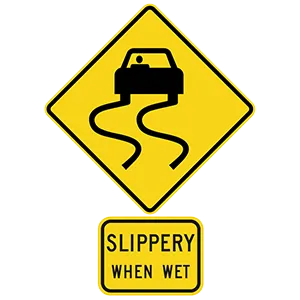
Warning signs are usually yellow with black markings. They alert you to conditions that are immediately ahead. This sign warns that the roadway is slippery when wet.
See the exact questions that will be on the 2025 New York DMV exam.
99.2% of people who use the cheat sheet pass the FIRST TIME
LT gives us an insight on how the cheat sheet provided her with all the study questions she needed before taking her test.
Joe initially studied with the handbook and failed his test, he eventually found us online, studied and pass his test the first time around.
